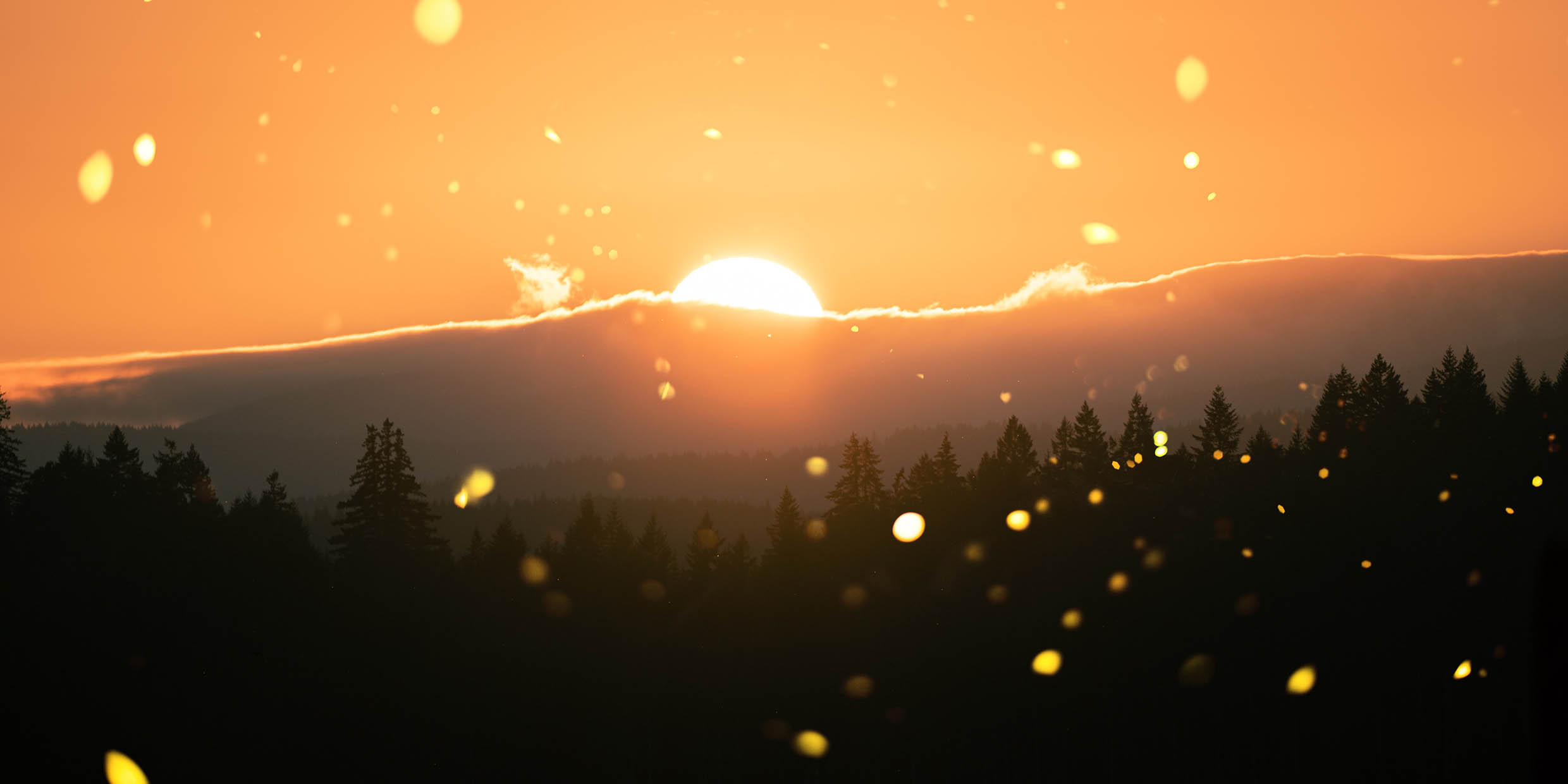Originally published 9 September 2003
Just back from Europe. I’ve reset my watch, turned the small hand back five hours. Reset the clock in my laptop. There’s one clock I can’t reset so quickly — the one inside my body, the tick-tocking proteins that tell my body when to wake and sleep.
I have no access to my body clock. Eventually it will reset itself in response to signals from specialized photoreceptors on the retinas of my eyes. The clock will change its rate of ticking until it is again in synch with light and dark.
In the meantime, I fall asleep five hours before I want to and wake up in the middle of the night.
Mimosa plants were among the first organisms to reveal innate timekeeping. In the 1700s, French scientists kept mimosas under conditions of constant light and discovered that the leaves continued to open and close at approximately daily intervals, with a period of about 22 hours (circadian, “roughly-daily”) instead of 24 hours. Without adjustment by exposure to the sun’s natural cycle, the mimosa’s clock runs somewhat fast.
Mosquitoes, morning-glories, even bread molds possess circadian rhythms; only the most primitive single-cell organisms appear to be without internal timekeepers.
What are these clocks, where are they located, and what makes them tick?
Much progress has been made since I first wrote about this subject 14 years ago. We now know, for example, that plants and animals have somewhat different methods of timekeeping. We know that human clocks are distributed throughout the body: Livers, lungs, and kidneys tick away on their own, even when removed from the body and kept alive in culture. A clock in the forebrain helps regulate behaviors. Some timekeeping genes and proteins have been identified.
The human master-clock that controls our waking and sleeping rhythms appears to reside in the part of our brains called the suprachiasmatic nuclei, or SCN, which is in the hypothalamus.
We know that biological timekeepers appear very early in the development of embryos. They may even play a role in controlling the expression of genes in embryonic development, although this is still uncertain.
One thing has become increasingly clear: We are creatures of the sun. Our bodies are genetically entrained to our star.
Of course, we shouldn’t expect anything else. A sensitivity to light and darkness is key to survival. The whole point of plants is to capture sunlight; their biology is necessarily solar. Animals also evolved patterns of hunting and feeding in light or darkness that increased their ability to find food or lessened their vulnerability to predators.
The earliest mammals may have been burrowers in dark tunnels, with a world of hungry dinosaurs overhead. Those troglodyte ancestors needed to know — needed to feel in their bones — when it was safe to go outside. Any genetic mutation that finessed their circadian clocks would be favored by natural selection.
Hamsters are perfect experimental mammals for mammalian biorhythm research because their wheel-running activity, which normally takes place at night, is easily monitored. Hamsters continue to take their daily run on a wheel even if kept in constant light. In the absence of external stimuli, the free-running rhythm of hamster circadian clocks is never less than 23.5 hours.
Well, almost never. One researcher found a mutant hamster with a 22-hour circadian clock, a genetic sport, from which he bred a line of short-rhythm offspring. He showed that he could shorten the rhythm of wheel-running in normal hamsters by surgically excising their SCN, and inserting SCN from fetal mutants — 24-hour hamsters turned into 22-hour hamsters by SCN transplants. A more convincing demonstration of the genetic basis for circadian clocks could hardly be imagined.
“We live in an old chaos of the sun, or old dependency of day and night,” wrote poet Wallace Stevens. The Earth spins and carries all living things into light and shadow. Anthropologists tell us that the primary myth of human culture is the story of the luminous hero who goes into darkness and returns triumphant. Our religions had their beginning in the solar fire — that golden chariot that wheels daily across the sky.
Our bodies hum with the solar rhythms. All complex plants and animals contain biochemical metronomes beating in time with the spinning Earth.



